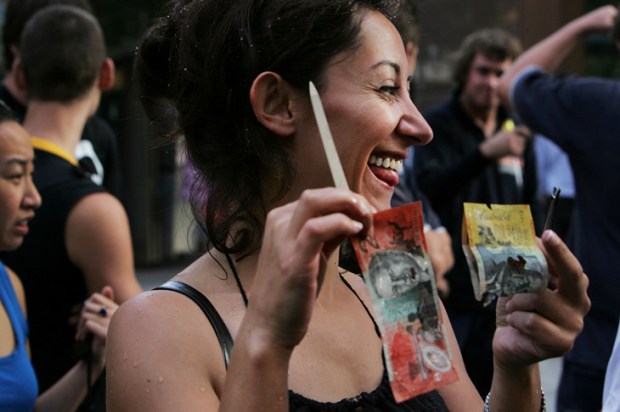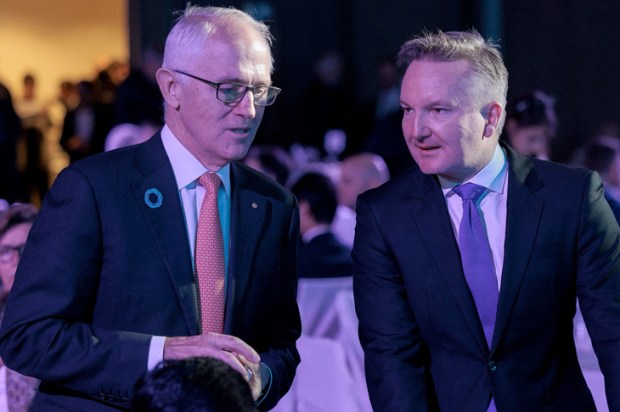It’s just as well I don’t have a Twitter account. Mind you, I’m told that it’s not a pre-requisite for a personal pile-on, even though many of the comments will bemoan the absence of my account.
Actually, as far as I can see, Twitter is a mean-spirited, defamatory cesspit inhabited by extremely rude activists. Constructive, open debate is the last thing on their minds. If it’s a choice between the plague and Twitter, I know which one I’d choose.
I want to let you in on a secret that you won’t read about on Twitter and is deliberately hidden by the radical Left – Australian women are doing well. Sure, there are some pockets of disadvantage; there are some areas of concern. But, on average, Australian women are doing well in terms of workforce participation, earnings, education and work/life satisfaction.
And it’s not just that they are doing well, the outcomes on most fronts have improved significantly over the years.
To be sure, there were some unjustified (and offensive) impediments that existed in the past – like women having to resign their permanent positions upon marriage or the stipulated lower award wages for women.
But these outmoded institutional arrangements were abandoned many decades ago. For instance, the principle of equal pay whereby women and men are entitled to the same regulated wage for undertaking the same job has been in force for nearly half a century.
But what about the gender pay gap, you ask? Isn’t that all the rage when it comes to sparking outrage among the Twitter crowd? That’s a real problem caused by misogynistic-based discrimination, surely?
So here’s the sober analysis. The current national gender pay gap is around 13.4 per cent using figures for full-time workers only. That’s lower than in 2019 and lower again than in 2014 at 18.5 per cent (when the mining boom had pushed up the wages of mining workers, who are mainly men).
But here’s the thing, after all the factors that contribute to a person’s earnings are taken into account – education, occupation, industry, career breaks and the like – it looks as though there is very little to explain when it comes to the gender pay gap.
Indeed, the important work of Professor Deborah Cobb-Clark of Sydney University has shown that Australian women actually do better than men in the lower part of the wage distribution –dumb (ill-educated) men do very badly in the labour market – and that all the action in terms of the gender pay gap that still exists is among the highest earners.
This finding is consistent with the work of Professor Claudia Goldin of Harvard University who has established that the reluctance of women to take jobs that require very long and unpredictable hours is the main explanation for the ongoing pay gap given that these types of jobs attract a considerable wage premium.
A similar conclusion has been found by Scandinavian researchers for a part of the world where public policy and company HR rules are about as favourable to women as anywhere in the world. Even in these countries, a gender pay gap persists because some women with children are reluctant to take on demanding jobs, including those jobs that involve a lot of travel.
Of course, this is where the Marxist-feminist thinkers enter the fray and assert that women are simply caught up in a sense of false consciousness of wanting to be at home, at least some of the time, to rear their children and run the home.
Evidently, an aversion to entirely contracting out your own children’s care arises from society’s oppressive and deeply sexist precepts. Try telling that to the women I know – and me, for that matter.
When it comes to women’s participation in the workforce, the news is uniformly good. The rate of workforce participation among women has never been higher at 61.4 per cent. In 1978, the rate was 44 per cent. For men, workforce participation has been on a downward march over that same period, dropping from 79.5 per cent in 1978 to 71 per cent currently.
And when it comes to education, we all know that girls outperform boys on almost every measure. They have higher rates of retention in school, they take away a disproportionate number of the top awards in Year 12 and there are more women undertaking higher education than men. In some courses that were traditionally male-dominated – medicine, law and veterinary science – there are now more women than men and have been for some time.
We also know that women report higher levels of workplace satisfaction than men. Using the important data set, the Household Income and Labour Dynamics in Australia survey, it’s clear that women’s workplace satisfaction is significantly higher than men’s – by nearly 14 per cent. Women also report higher life satisfaction than men.
While the degree of occupational segmentation persists to a degree – men dominating in some occupations, women dominating in others (including working for the Orwellian-titled government agency, the Workplace Gender Equality Agency) – it’s mainly men who undertake the seriously unpleasant occupations such as sewage worker, pest controller, rubbish collector, high-rise window cleaner and the like.
Men are also disproportionately involved in workplace accidents. For every 100 workplace fatalities, over 90 are men. I could also mention that the imprisonment rate in Australia is 10 times higher for men than women – 381 men per 100,000 men compared with just 31 women per 100,000 women – but that might get me into hot water. OK, hotter water
Given that the Prime Minister has become obsessed with the position of women in Australian society – to the point of appointing a Prime Minister for Women (qué?) – he might like to point out some of these good news stories about average women.
You know the ones who would rather fly to the moon than become a politician. The ones who spend their days juggling work and family commitments while contributing to their local communities. The ones who see the men in their lives as valued partners.
They don’t worry about the gender pay gap or being the victims of an overbearing, patriarchal society. In fact, they don’t see themselves as victims at all
By all means, do what is necessary to rout out violence against women and workplace harassment. Just don’t make that the whole story.
Got something to add? Join the discussion and comment below.
Get 10 issues for just $10
Subscribe to The Spectator Australia today for the next 10 magazine issues, plus full online access, for just $10.
You might disagree with half of it, but you’ll enjoy reading all of it. Try your first month for free, then just $2 a week for the remainder of your first year.













Comments
Don't miss out
Join the conversation with other Spectator Australia readers. Subscribe to leave a comment.
SUBSCRIBEAlready a subscriber? Log in